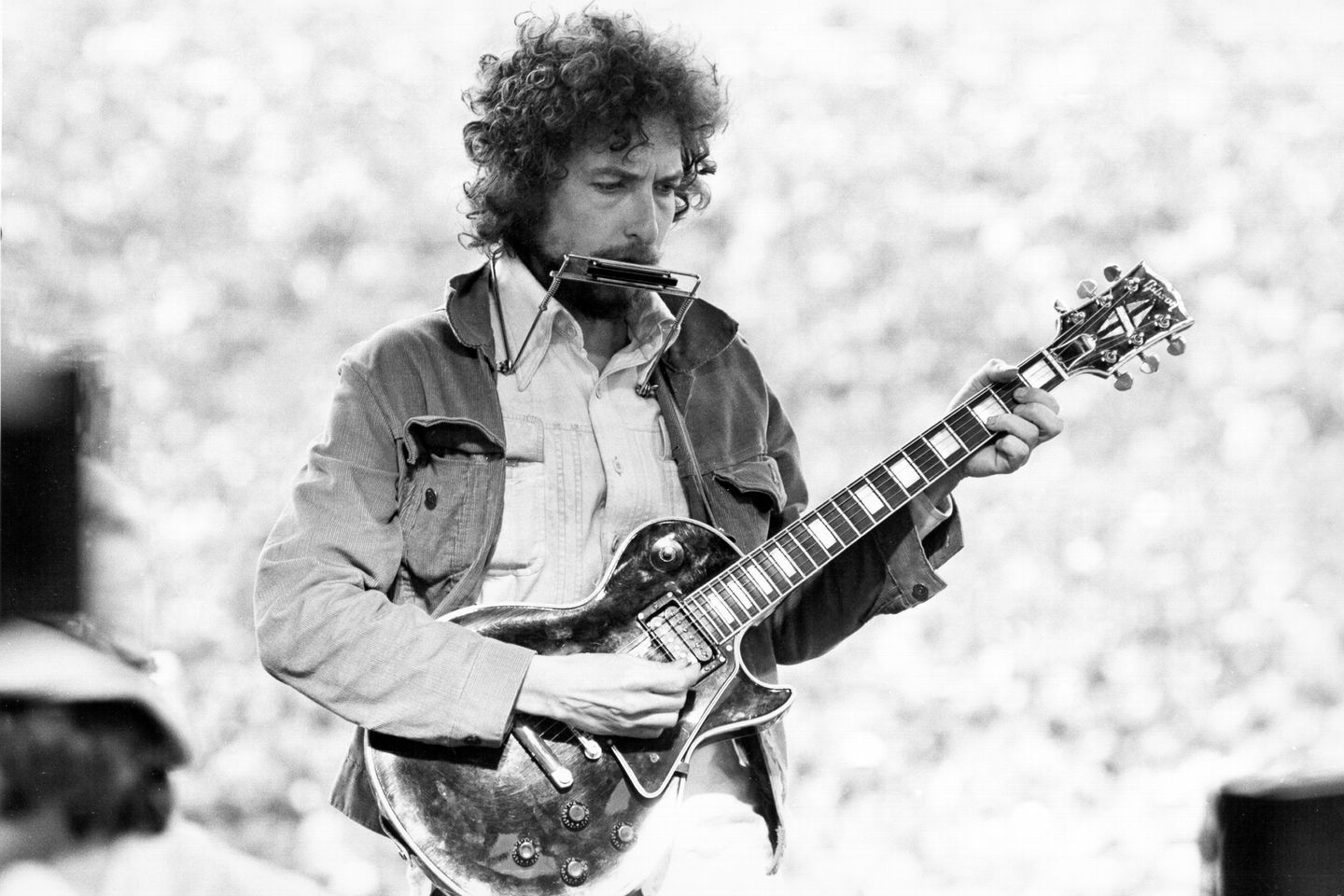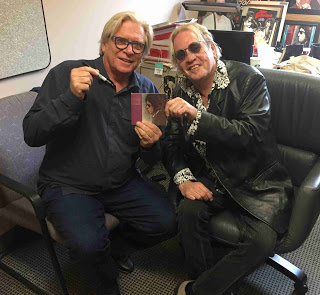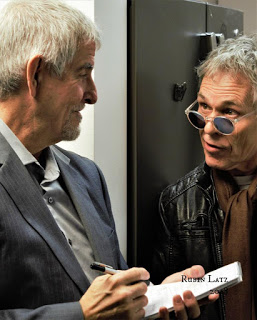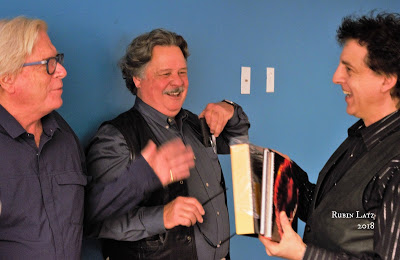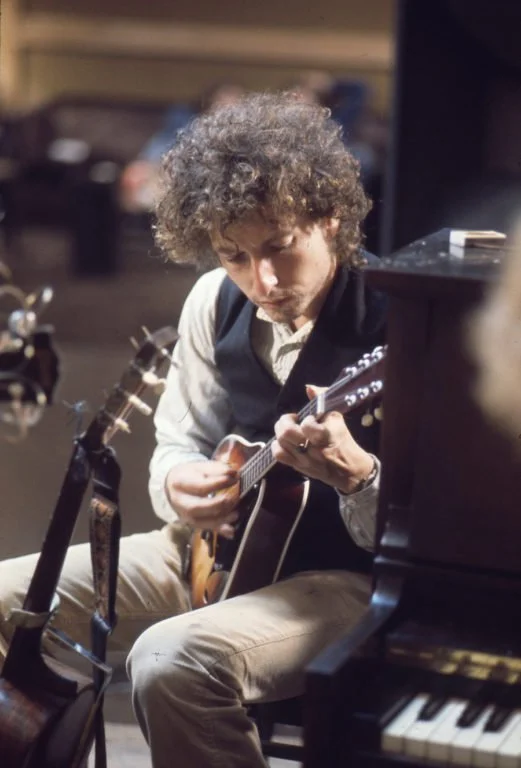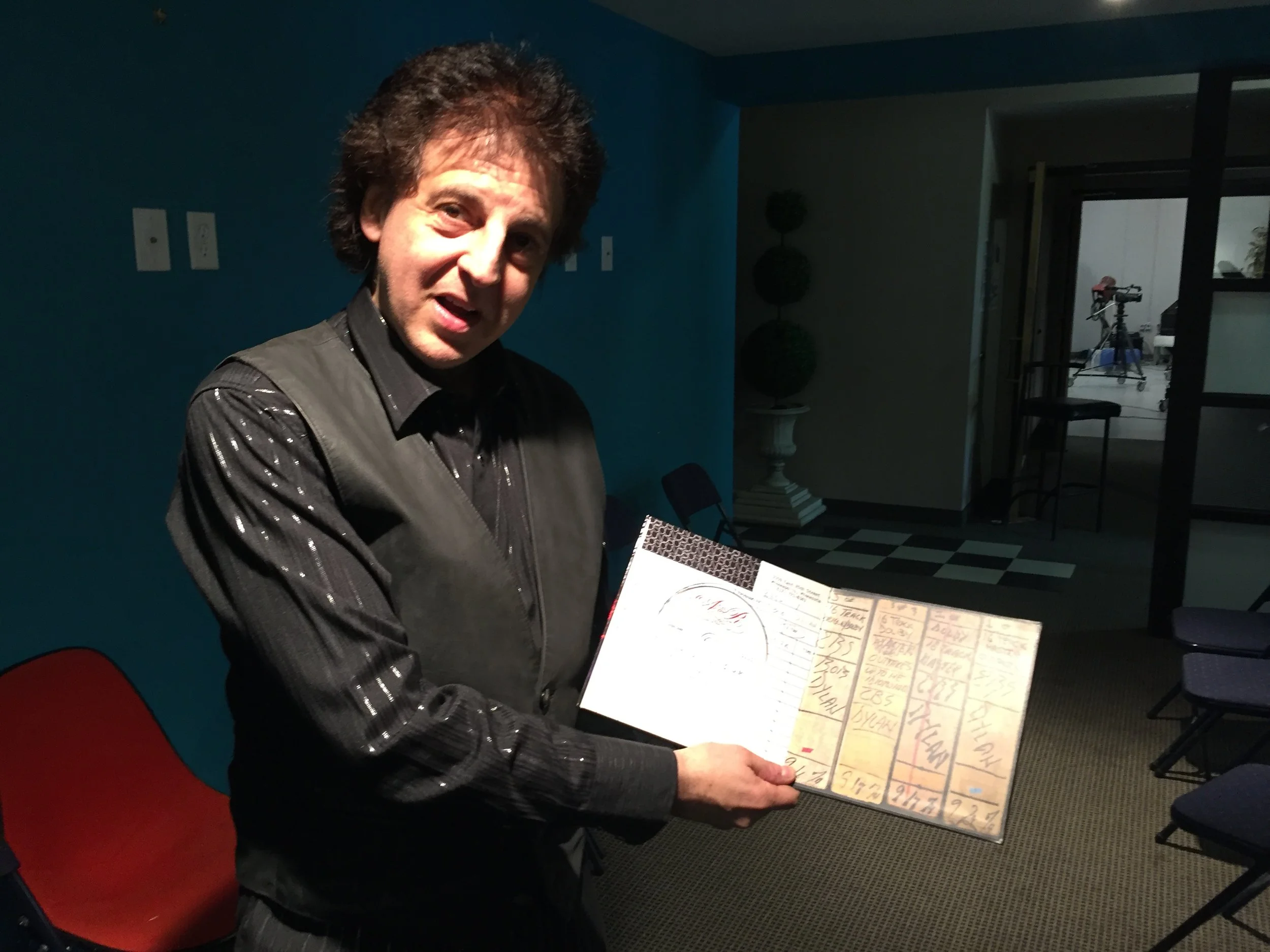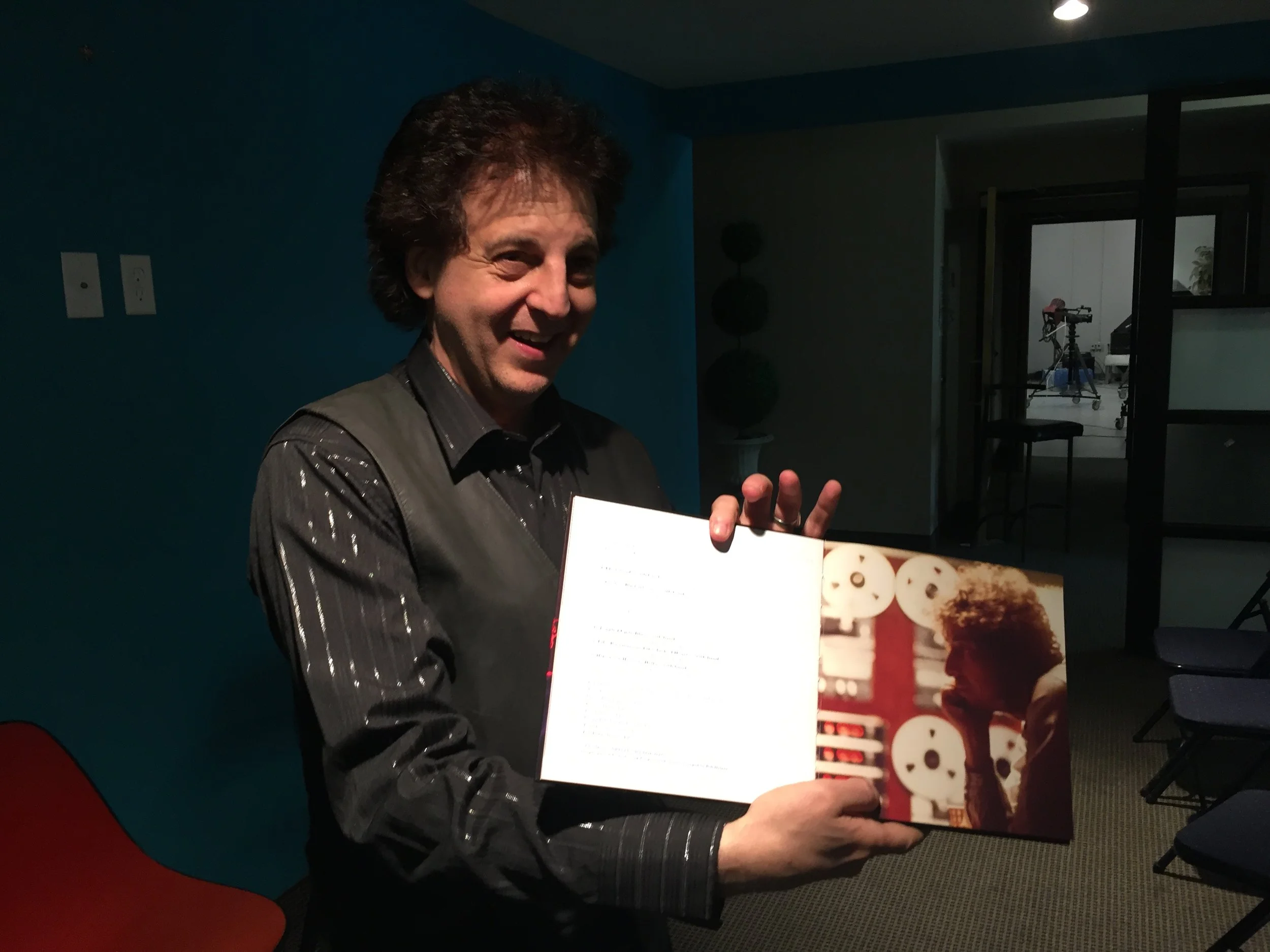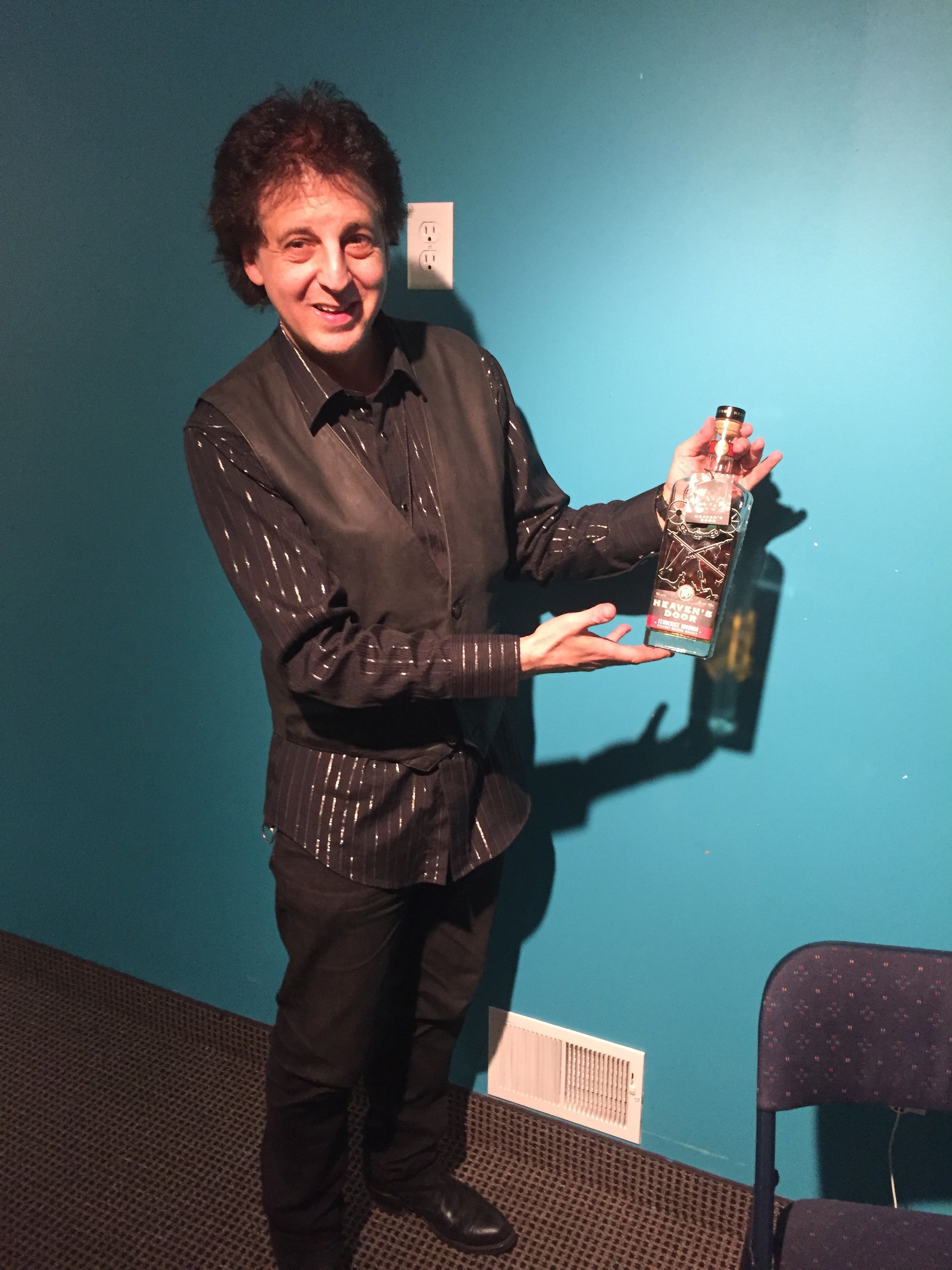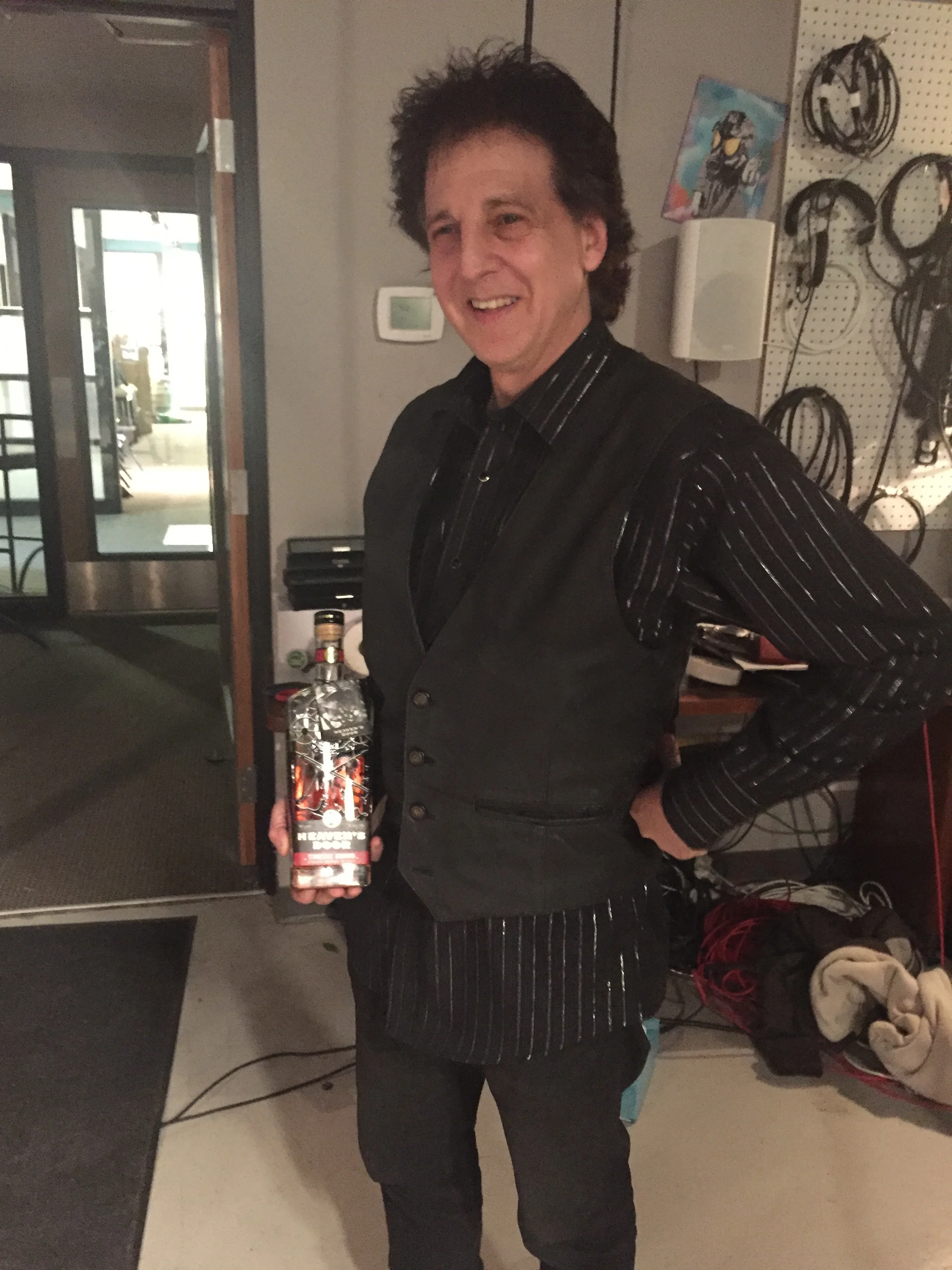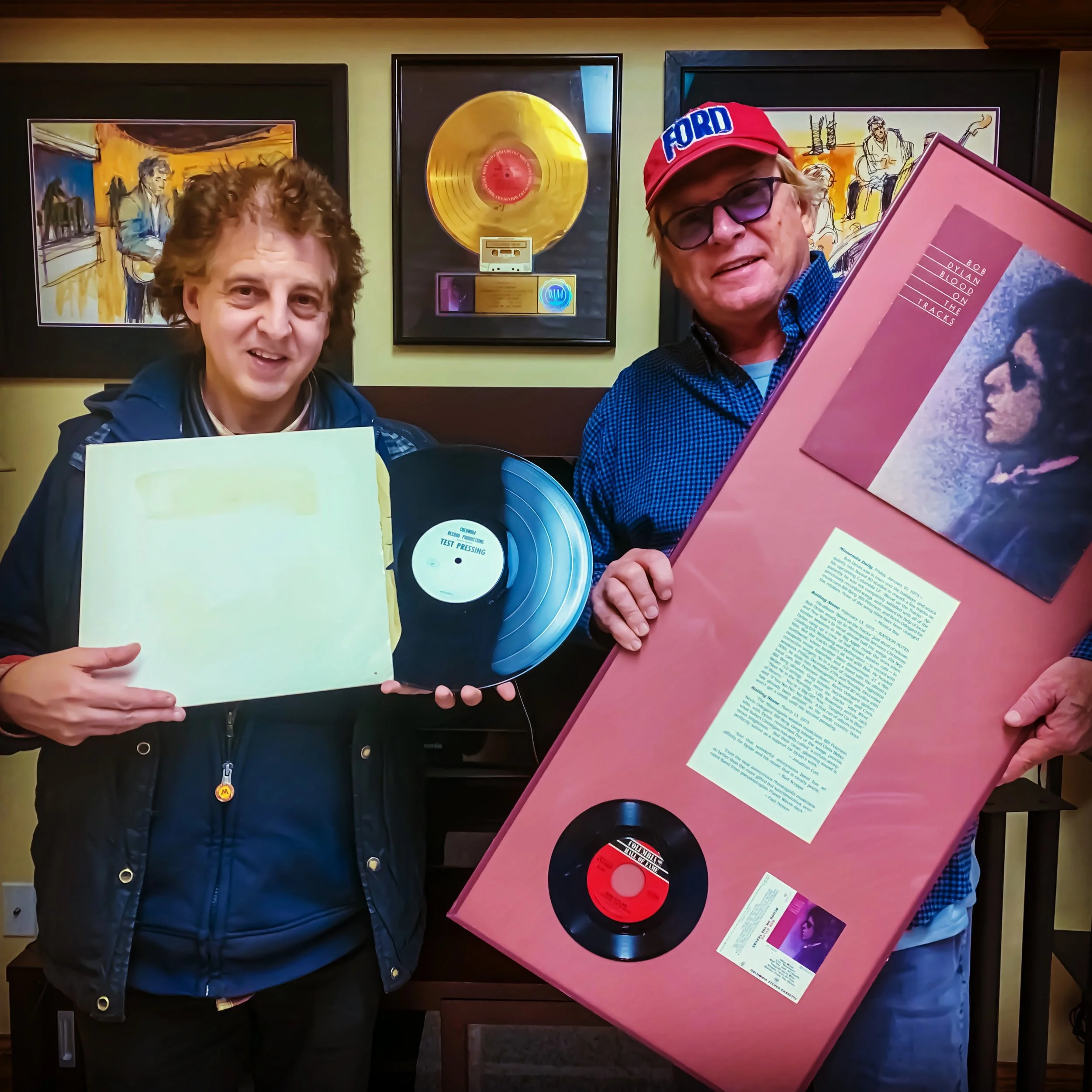Bob Dylan’s 1975 album Blood On The Tracks was a game-changing album upon its release. At the time, Dylan was long past his mid-60s heyday, and although his recent albums had hit Number 1 on the albums charts, and his 1974 reunion tour with The Band had broken sales and attendance records around the U.S., a slew of new artists appeared to have taken his place in the hearts of a generation of music fans, who already thought of Dylan as the granddaddy of the singer-songwriter genre, one he had invented and jettisoned in short order before many of them were adults.
That all changed with the release of Blood On The Tracks. The album, and its leadoff single, the epic masterpiece “Tangled Up In Blue,” rightly reestablished Dylan as an artist without peer; once again the voice of a generation, albeit this time a generation whose lives had been tempered by war, assassinations, and the festering scandal that would become known as Watergate.
As we now know, Dylan entered the former Columbia Studios in New York City in September 1974, armed with a batch of songs he surely knew ranked with his best, intent on making an acoustic album. Over the course of the sessions, chronicled on the latest installment of Dylan’s long-running Bootleg Series, the newly released More Blood, More Tracks (pick up a copy of the limited-edition CD set, featuring liner notes written by Rock Cellar’s Jeff Slate, here) he was cajoled into working with a band, but the results were quickly deemed unworthy, and the acetates struck from the four days in New York ultimately showcased Dylan with minimal accompaniment.
But then Dylan had second thoughts. By the time the Holiday Season rolled around, Dylan, who was vacationing with family in his native Minnesota, he’d decided that, at the very least, the songwriting masterclass “Idiot Wind” needed to be re-cut.
And so, on December 27, 1974, Dylan and a group of Minneapolis’ best musicians — drummer Bill Berg, bassist Billy Peterson, Gregg Inhofer on piano and Hammond organ, Peter Ostroushko on mandolin, and Chris Weber joining Dylan on guitar — entered Studio 80 there to see if they could catch lightning in a bottle.
Kevin Odegard, who helped organize the sessions, and who played guitar on “Tangled Up In Blue,” tells Rock Cellar Magazine the tale.
Rock Cellar: How did you get the call, and what was your reaction? Let’s start there.
Kevin Odegard: I was dodging railroad calls. I wasn’t answering the phone. I was watching Kojak with my roommate. It was a cold night. I didn’t want to go to Iowa on the southbound freight train, Chicago, Northwestern; really not interested in answering the phone at all. It rang seven, eight, nine times; and I knew it was either the crew caller or somebody I didn’t want to talk to. That was a very, very cold winter. I just did not want to ride a boxcar and get stuck in some town in Iowa.
So finally it rang so many times, that I answered, and it was (Dylan’s brother) David Zimmerman; and things progressed from there.
Rock Cellar: How did he portray it to you?
Kevin Odegard: David was, as usual — and David had been my friend already for seven, eight years — very low-key; and he said, “hey, how you doing, good, do you know where I might find a very special Martin guitar? A small-body Martin guitar, preferably with gut strings, but if you can find something close to that, I’d really appreciate it.” I said, “Okay,” and “why?” I understood by the end of the two or three-minute phone call that first time that because it was a tradition with the Zimmerman family that was in town that it was for Bob. So I was beginning to really synapse on the whole thing.
I said, “Yes, well, let me make a call,” and I made one call, and I found a guitar. I found the guitar that David was after; called him right back; and I said, “Yes, I got one.” He said, “Okay, well, here’s the deal, bring it to Sound 80 tomorrow night at 5:00 p.m., and don’t tell anybody.” I said, “So, this is for Bob, right?” and there was kind of an implicit understanding there, because we knew each other well. So that was that.
Rock Cellar: Did he say yes?
Kevin Odegard: He said — no, he did not say yes. He said, “I can’t tell you that,” because of course Bob was standing right there. This was the front end of a project where — you can only look in retrospect. You can only Monday morning quarterback something like this and say, “Well, David is throwing some doubts into Bob’s mind.” That’s all afterward. You can figure all this stuff out afterward pretty quick; but at the moment, no, he did not. David was a steadfast guardian at the gate; always was. His house literally stands at the end of the driveway of Bob’s compound on the Crow River, so he literally plays that role.
Only when I got to Sound 80 the next night did it all come together. Chris Weber had the perception that there was something going on; that there was something that I was not telling him. But that first night I called him back, and I said, “So, can I get this guitar from you and bring it down to a session tomorrow?” and of course I got the third degree. Chris wanted to know what was happening, and I couldn’t tell him, and I didn’t tell him. I said, “No,” and he said, “Well, in that case, I’m coming along.”
Rock Cellar: And so the next night you found yourselves at Sound 80?
Kevin Odegard: Yes. Chris came along with the guitar. And everybody we’d called congregated in the main studio. And then Billy Peterson turned around to see a guy who was obviously Bob Dylan in the studio. He had not been told. Nobody had been told. I think only Gregg Inhofer had been told; because David and I had, during that same phone call, put together a band of his favorites and my favorites; people that might do well on the fly with Bob.
Bill Berg and Peterson had just gotten finished with Dreams and All That Stuff, with Leo Kottke. They had recently done a Cat Stevens album at Sound 80, too. ButDreams and All That Stuff with Leo Kottke was the perfect introduction to Blood on the Tracks because Leo never played, even in concert, the same song twice the same way. He keeps you on your toes, and these guys were very highly trained jazz musicians. Berg and Peterson were the secret to the whole thing. They made the magic happen at Sound 80. Once Bob got introduced to them, understood that Bill Berg was from Hibbing, Bob started to relax. He became Bobby Zimmerman at that point. He was just a guy from Minnesota; and by the end of that very session, during which we did “Idiot Wind” and one other song, Bob was really, really happy and very relaxed; as much as you can be when you’ve got a mountain of creative impetus going.
He really was very inspired, and you could see he was also very focused on getting the work done and getting these things into a more urgent form.
Rock Cellar: Do you know why they picked those five songs?
Kevin Odegard: Yes. They didn’t pick those five. They picked one. They picked “Idiot Wind,” and it sounded terrible. It was awful. Chris was designated to learn the songs in the vocal booth with Bob, who was still scribbling last minute lyric changes on little pink post-it notes. They came out, and they taught it to the band; and it was discordant. We started off on a C-minor chord, and everybody’s looking at each other like, what is this. It was one song. That was all we were going to do. Bob just wanted to redo one and maybe pick a single out of the batch. So he was eager to do at least one, but he was so happy with that one, after a couple of tries.
Rock Cellar: You said it sounded bad. How quickly did “Idiot Wind” come together, though?
Kevin Odegard: Almost immediately.
Rock Cellar: So nobody had access to the acetate versions prior to the session; it was just learning on the fly.
Kevin Odegard: No. One day after, yes. The day before, no. The day after, the 30th, I had them. I had the acetate versions, and I liked them. I still like them. I’m very, very excited everyone will get to hear all the versions. “Idiot Wind” is three different songs, depending on who plays it; especially when Paul Griffin jumps in (on the New York version). But let’s get back to that first song in Sound 80. “Idiot Wind” — it was the only one he wanted to do; but once we got warmed up into that very first take we really got going; especially Bill Berg, who is literally genius artist in any format and can get into character and do something so quickly that we could keep up with Bob Dylan in a studio.
These guys, between Berg and Billy Peterson, were good enough to back up any jazz artist. Oscar Peterson, Keith Jarrett comes through town — anybody who came through town — they would keep up with them. They were the guys. They were the guys who could keep up with anybody. Anybody who a club threw at them, they were the designated band that would back up the legends, the jazz legends. So when they get with Bob, they really flew.
Rock Cellar: It’s interesting, too, because there are a lot of false legends in the Blood on the Tracks story; but one of them is that these guys were really just jingle guys. That’s not really the case, was it?
Kevin Odegard: Not at all. But musicians at 20, maybe we’re going to have to do a couple of other things; because as Mike McDonald said this past year, it’s an expensive hobby. Now, that’s Michael McDonald, so there you go.
But back to the studio, at the end of “Idiot Wind,” we did six or seven takes, I’m sure, and by the end of it, Berg had figured out how to play at the tail end of the beat. So if you listen to “Idiot Wind,” you hear where he hits the snare. Sometimes he hits it with a brush. Sometimes he hits it with a stick. Let’s say a beat is 10 feet long. He hits it at 9.5 feet into the beat. So he’s way at the tail end of the beat, every time, just like magic. He’s way at the tail end of every beat, and that just gives it such energy; and Bob got fired up with that. Bob’s engine got going.
You could see the fire burning in Bob; and by the time we get to take five, take six, we’re all good. Believe me, they were all good. We were like, wow, this is great. We’re having fun. You couldn’t help but think of Highway 61 Revisited, and you couldn’t help but think of “Like a Rolling Stone.”
Bob was expressing his anger in that song, and he wanted to bring forth those forces like you’d hear in “Positively 4th Street,” things like that, “Can You Please Crawl Out Your Window,” Early Bob stuff that — he was able to really bring his anger forth in a poetic manner.
In the moment, I thought of it; and it’s like, wow, it’s 1965 again. It was amazing. It really was.
So I think take seven or eight is the one that we’ve got. So whatever we’d done with “Idiot Wind” — that was the launching pad for Bob. When we went into “You’re A Big Girl Now.” He just was after one song. Two was just gravy. So he’s in the parking lot after the second one, and he rolls down his window; and it’s freezing outside. He pulls up to Billy Peterson and says, “You know, what we just did in there — that was really great, man, that was really fantastic, we really did some good work there.” Then he went home and buzzed over it all weekend.
By Saturday we got a callback for Monday. That’s how quickly things happened. We got a callback within, I would say, 24 hours. Bob knew the quality of the work. These were not jingle-meisters. The studio was a jingle place, yes. Sound 80 was where jingle came out of, because they had to pay the rent.
Rock Cellar: It’s interesting, I don’t think that people know that long before Prince and the Replacements and anything else that was going on up there later, there were really world-class players in and around Minneapolis.
Kevin Odegard: There were. It’s such an insular place, though. It’s so provincial. We’re so humble up here. It’s so “Minnesota nice.” No one is going to toot their own horn, especially Berg and Peterson. Berg’s from the Iron Range, from Hibbing, of humble origin. Billy Peterson, from the first family of Minnesota jazz — his mother, his father were band people, music people. Today his brother, Ricky — he goes out with Stevie Nicks, doing the whole touring thing. The whole family are like the Kennedys of Minneapolis. That’s how legendary they are here.
They are just hallowed people.
Rock Cellar: So you got “Idiot Wind” down in, it sounds like, seven takes or so. Everybody’s buzzing. How quickly does he want to try another tune?
Kevin Odegard: Right away — I think he feels like it’s just — he’s going to toss one off just to try it out; because he’s feeling good now. He’s relaxed. He’s Bobby Zimmerman from Hibbing now. He’s got that whole movie star persona shed. All that stuff — he doesn’t need it. He doesn’t need to use any of that machinery, any of that equipment to get what he wants, because if there’s one thing that is common to New York in the Minneapolis sessions — if you read my coauthor’s accountof Buddy Cage and Bob Dylan, Bob Dylan’s going to get what he fucking wants.
If he has to put his fist down your throat, he’ll get what he wants; and he’s going to do it.
Either you capitulate, you give it to him, or you’re not on the gig anymore. It’s that simple. So these guys gave it to him, and then it was just a toss off, that second song; but here’s the rub. Billy had to go downtown, because his band mates wouldn’t put up with any lateness at the Longhorn jazz club — a longstanding jazz club in Minneapolis. His band mates, in particular, Bob Rockwell, the sax player, would not — I don’t care who you’re playing with. I don’t care if you’re playing with God. You’re going to show up on time for your gig. You’re going to be here. You’re going to punch in at 9:00, and we’re going to start playing.
So Billy was gone. And so there’s no bass on that song. We did “You’re a Big Girl Now” with no bass and a million guitars. Bob overdubbed at least two flamenco Martin guitars on that thing himself after he’d gotten through the first take. He started using the small body Martin guitar that Chris Weber had gotten him on that song, but he wanted more of an international world music sound. So these flamenco licks that you hear on there, all that stuff? That’s Bob. What you hear behind is a jingle jangle of Chris on a 12-string Martin; and then you hear Bill Berg on the drums; and Gregg Inhofer is on the Hammond B3 again, and he also played wonderful grand piano.
Rock Cellar: I’m just trying to get a relative sense of the size of the live room. What was the live room like?
Kevin Odegard: It was an L-shaped room. It’s still there. The Guinness Book of Records used to say it’s the quietest room in the world. Nobody could last in there more than eight minutes before going crazy. But it was an L-shaped room, and I’m going to say it was 60 feet across; and then the part that was not the L was the control booth. So that stuck out into this big square.
Rock Cellar: Was everybody in a centralized, concentrated, space? Were they using headphones, or were they looking at each other? How was Bob managing the session?
Kevin Odegard: Everybody was within five feet of one another, looking directly at each other, with one ear off on the Sennheiser headphones that we used back then. It was a very live session — eye contact, lots of it — nothing about being insulated and sound not leaking from the drums to the piano track; none of that, because (engineer) Paul Martinson wanted the feel; wanted the performance. Martinson is the unsung hero of these sessions. He wanted a performance first, unlike almost every other engineer you ever run into in your life. He wants a performance instead of perfection. So he doesn’t stilt musicians. He doesn’t hold you up. He doesn’t say, “Wait a minute, I want to reset this — let’s go.” He’s like, “Let’s go.”
Oh, man, Bob loved that. Bob could just fly in that room, like he couldn’t in New York, because — it was a huge room in New York. It was five times — A&R Studios — giant room — they did orchestras in there; so a very, very different atmosphere, and I think Bob got really super, super comfortable with the session compared to the acrimony that erupted in New York; and also very happy with the outcome, immediately. There was an instantaneous recognition and acknowledgment that this was a job well done. The phone started to ring, and we had two in the can, because the second song was just as good as the first, if not better, because it was so relaxed. So Bob was on a roll and said, “Well, let’s book Monday,” so we did.
Rock Cellar: Tell me a little bit about the run up — what you knew about what was going to happen on Monday. How did your role in that change?
Kevin Odegard: My role changed because I had gotten Gregg on the session. Gregg Inhofer had been working with me over the years. We’d played lots of gigs together and clubs and we were friends, and friends help each other. So Gregg, on his call from David, said, “You know, Kevin got me this gig, can you make an effort to see that he gets to play on Monday, because Kevin pretty much gave up the first chair to Chris on night one.” David said, “I’ll try, I can’t promise anything.”
So that’s how that went. That’s really an honest, hard to tell story; but that’s how I got on the second session at all. That’s how I got my guitar out of its case, my 1969 Martin rosewood guitar, a D-28.
Rock Cellar: Bob at that point had a unit that was working and that he was comfortable with. Was there any reluctance on his part, that you could tell, to have you on the session?
Kevin Odegard: No. He deferred to his brother, and his brother and I had gone back many years at that point. It was, “What the hell, who cares,” to Bob. “We’ll mix him out if it doesn’t work.”
Rock Cellar: So then on Monday, what do you tackle first? I assume you tackled “Tangled Up in Blue” first. How did it go down?
Kevin Odegard: Bob started playing “Tangled Up in Blue” to Chris, just like the day before. The setup was identical. It was identical personnel to night one. Later we’ll get into people arriving late at the session, but this was the same personnel. It was also highly guarded; nobody talked. Everybody was loyal to David in terms of, “We’re not going to talk about this; we’re not going to tell friends what we’re doing; we’re not going to talk to journalists; we’re not going to talk to anybody. We’re just going to show up on Monday again, and we’re going to keep our mouths shut.”
Rock Cellar: Do you remember where, in relation to Bob, everybody was seated?
Kevin Odegard: I know exactly where, yes.
Rock Cellar: Just describe the live room for me.
Kevin Odegard: There was a big, huge pane of glass on the front of the control booth, and at the corner it continues, and takes a 90-degree angle to the left. Bob stood on that point and worked around that point for both sessions, for the whole night, like a good fisherman works a spot. He stood on that point, and he ran the sessions; and he produced these things.
Don’t let anybody tell you otherwise. Bob produced the sessions. Bob ran the deal. He knew what he wanted. He got it. He was stationed in a place where he could see everybody. Eye contact — and he could talk to us.
Also, he deferred heavily to Berg and Peterson. He was rubbing shoulders with these guys. He was friendly with them, especially Berg. He really bonded to his right side. On his left side, I was first up. I was right next to Gregg Inhofer. In front of me, directly in front of Bob, was Chris Weber. So we’re in a semicircle on the point of this 90-degree angle, everybody facing Bob, rapt in attention.
Rock Cellar: Describe — before we get into the tunes — it doesn’t sound like Bob spent a whole lot of time in the control room, but just tell me a little bit about what that control room was like relative to A&R or any world-class studio in 1974.
Kevin Odegard: It was up to any world-class facility. It was comfortable. It was casual. On the first night, unbeknownst to Leo Kottke, who tells a story about this in his concerts now; but Leo was in studio B doing some stuff, and he had a long conversation with Bob, maybe 20 minutes, and told Bob all the stuff that he liked. Bob told Leo all the stuff that he liked from his early albums, from his Tacoma Records stuff. Leo never realized that he was talking to Bob Dylan, for about 20 years. Then he started telling the story in his concerts. So Leo was hanging around there. There was nobody extraneous on either session. Nobody. Everybody knew everybody.
Rock Cellar: Right. So you get there, and it’s got to be a little bit looser. Bob’s got to be relatively comfortable. What was the conversation about what you were going to tackle that evening?
Kevin Odegard: There was no conversation beforehand. Now, my role in that first session, I was kind of a gopher. By the second session Bob came alone, and he was kind of happy when he showed up the second day. He was into it. But there was no talk beforehand. David talked to us a little bit and said, “Jackets have already been printed, so you’re not going to get credit.” But we got started right away. For the first song, when Chris and Bob came out of the booth, we were in G. It was called “Tangled Up in Blue.” It was a good song. You can hear, basically, that version in the New York sessions.
I can only see that now. But it was good, and I got to play on it. Bob didn’t kick me off the session after one take of one song, so I felt like, “Okay, I’m here now.” I got comfortable, and I was right next to Bob. I was just to his left; and he turned to me and asked me, “What did you think?” and I said, “Well, it’s passable.” He stopped me right there. He held up his hand, and — “Wait a minute, what do you mean passable?” and I said, “Well, you know, it’s good, but I think it should be in a higher key. I think it would be more exciting, have more energy, it would be energized, and you’d be reaching for the notes, and it would play better in the key of A.”
I didn’t know at that time that the whole album had been written, I believe, in the key of E, which got him kicked out of Mike Bloomfield’s house in Mill Valley at one point; but so be it. It still needed to come up one more key, because it was just a song. My heart sank about three or four times. I felt like he was going to say, “Well, put your guitar in the case, and get out of here, go home,” but there was this long pause, and after that he gave it a shot. He gave me a shot, and the idea worked. It just that I knew it would, but I forgot who I was with. I didn’t know that I was in a room with this guy who had taken the world by storm. So he said, “Okay, well, let’s try it.”
So we tried it, and it just kicked ass, right away. We did eight bars, and he just turned around, and he looked down at the ground; and he said, “Oh, yeah, this is great.” So then he turned over to Paul, and he said, “Let’s just take one of each,” and we did. That was the only take in A, and Paul ran a quarter-inch safety mix on a Revox machine beside the main console and faded it at the end; and that is what you — until now — have heard. That’s the one — no post-production, nothing. It went to the Santa Maria pressing plant just like that. It was a safety mix. That’s how live that was. So I was really intrigued at your earlier question. How live was it? It was fucking live.
We had our headphones halfway off. We had our headphones — really, it was more of a jam than anything else — people don’t know that.
Rock Cellar: Tell me — because it’s a hot take — I’m curious, how long had you guys been in the room playing? You’d done one take in G, and then you moved to A; tried eight bars, and then just did one more take in A, and that’s it, that’s all you played of “Tangled Up in Blue;” basically two and a half times.
Kevin Odegard: Yes, and this goes to the genius of not just Bob but the genius of Bob, Bill, and Billy. Those three people drove this thing heavenward. It was insane. Things can happen very fast if they’re generating that quickly, if the ideas are flying, and the energy is flying around the room that quickly. Things like that can happen very fast. This was a moment. Right after the harmonica solo at the end, we knew that this was the one. Even Bob. We all looked down for a minute. We gulped. It was like, whoa. That was something. The room went dead quiet. It was like nothing before or since in my entire life.
Rock Cellar: So according to my notes, next you guys tackled “Lily, Rosemary and the Jack of Hearts.”
Kevin Odegard: Yes.
Rock Cellar: At that point did you get a sense that he was maybe going to keep going beyond what you expected? What was going through your mind? Or, you were just kind of in the moment and following along and just trying to focus. Do you think, “Is he going to re-cut this whole album?” Did you have any sense of what was going on?
Kevin Odegard: No, we didn’t care. I was on cloud nine. I was just — I couldn’t even — it was one of those moments where you don’t even need to think straight, because you know that all is right with the world.
So I was not needed; and I said to David, “I’m not needed on this song, this is just Bob,” and David came out of the booth and gave everybody instructions and said, “It’s a long song; if you think it’s over, it’s not, keep playing.” So it keeps on going. It was very cinematic once it got going. But I also need to harken back to recall an earlier moment in the sessions from the Friday before.
When Berg was playing at the end of the beat, because he pulled out the same trick for “Tangled Up in Blue” — now that beat is way at the tail end of the beat. When he hits that brush on the snare, it’s way down the alley. It almost hits the wall before he hits it, and that just drove Bob bananas. It just made the whole thing blossom, and it was one of those things.
Rock Cellar: And yet you were ego-less enough to step out for “Lily, Rosemary and the Jack of Hearts.”
Kevin Odegard: I didn’t even want to be on that one. I didn’t want to be on that one, because I felt like, there’s nothing I can add to this. This is just a simple thing. You could be playing a ukulele on this one. He’s going to tell a story.
Rock Cellar: So did anybody else step out on that one, or just you?
Kevin Odegard: No, everybody wanted out. I’d had my moment. I knew my moment had come and gone.
Rock Cellar: Again, one take?
Kevin Odegard: One take, and it was done; because Bob — obviously all of us were in the same headspace after “Tangled Up in Blue;” and what had transpired was … we just elevated the proceedings to a new level. So everybody was pretty happy with everybody else in the room at this point in time. Word went out even before “Lily, Rosemary and the Jack of Hearts,” that Bob might be interested in a mandolin player or a banjo player for the very last thing and gave Chris Weber the assignment to find somebody for mandolin, which he then dispatched to do.
Rock Cellar: This is at 8:00 at night.
Kevin Odegard: It was 8:00 at night, which means that after this, what happens at 9:00? The downbeats at the Longhorn. We had no more Billy Peterson. So again, time runs out on the bass player; and by the time they found Peter Ostroushko at the 400 Bar, the now renowned mandolin player, and he got over to the studio; it was going on 9:00, so Billy Peterson was gone. We had what we had, and we worked with what we had.
But Bob picked up a full-bodied Martin that he brought to the session for the very last song.
Rock Cellar: So who, again, is on this?
Kevin Odegard: This is Berg, Chris Weber on 12-string, Bob Dylan on guitar and on overdubbed guitar, Peter Ostroushko on mandolin, and Gregg Inhofer on Hammond B-3.
Rock Cellar: Did they run it down, or he showed it to them, and they launched into it?
Kevin Odegard: They took half of it, and then they took the whole thing. He was kind of happy with the way things were going; but he wanted a little higher register from the mandolin. Peter was not only sick, but his fingers were sore; so Bob borrowed the mandolin from Peter and played the goddamn thing himself.
Rock Cellar: As an overdub?
Kevin Odegard: Yes. That’s Bob Dylan on the mandolin, on the high notes. Peter’s still on it, but Bob played the high up stuff, the stuff that he heard in his head.
Rock Cellar: There was no acrimony about that? It was just that he heard something in his head and wanted to get it down.
Kevin Odegard: He heard something additional. He liked Peter. Peter’s on the take. Peter’s there in the middle register; but Bob heard something in addition to that that made the song take wings, and he put it on there; and it was great. By this time everybody was flying. It was just a total success, and now we knew it was nearing completion, and we could go home. We could tell our families. We could tell our friends. We could go back to our day jobs. We tumbled back down to earth.
Rock Cellar: Tell me: Was there any thought at all, or any conversation at all, of doing another night? Because it had been so successful, and there were 10 songs on the album. Was there any conversation about another night, another date?
Kevin Odegard: There was no talk of another date.
Rock Cellar: Interesting. That was it. He got what he wanted.
Kevin Odegard: That was it. Out of the Minneapolis musicians, he’d gotten what he wanted. He was already moving on.
Original Article: https://www.rockcellarmagazine.com/2018/11/09/bob-dylan-blood-on-the-tracks-recording-sessions-kevin-odegard-history/



